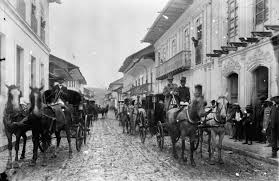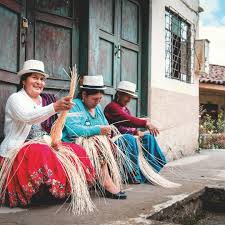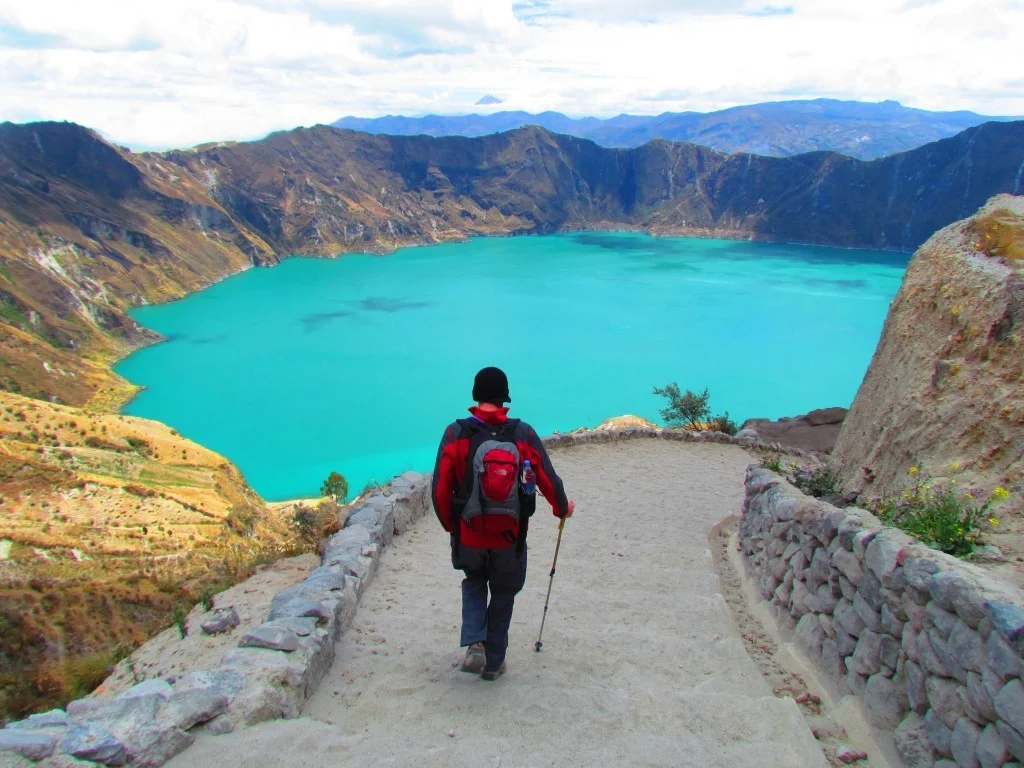Cuenca, Ecuador, a city nestled in the lush Andean mountains. Is a living museum that whispers tales of its storied past. Whether you’re a history buff, an intrepid traveler, or someone with a penchant for mesmerizing architecture. The historic sites in Cuenca, Ecuador offer an unparalleled journey through time. As you wander through its cobblestone streets, you will discover a city where colonial charm meets the vibrancy of modern life.
Designated as a UNESCO World Heritage Site, Cuenca’s historic center is a testament to the successful fusion of Spanish and indigenous cultures. Here, you’ll find beautifully preserved structures that date back to the 16th century. Showcasing the city’s rich architectural heritage. From the grand New Cathedral that took over a century to complete to the quaint, colorful facades of traditional homes. Each building tells a story of Cuenca’s evolution through the ages.
But what makes Cuenca truly special is its ability to make history come alive. Visitors can explore the archaeological site of Pumapungo. Where the remains of ancient Inca structures reveal insights into the region’s pre-Columbian past. Meanwhile, the vibrant local markets and artisan shops offer a modern-day glimpse into the cultural tapestry that continues to thrive in this historic city.
As you plan your visit, wether if its a long or a short one. Let this guide lead you through Cuenca’s must-see historic sites. Unveiling the city’s hidden gems and offering tips for an unforgettable experience. From majestic churches to bustling plazas, Cuenca invites you to step into a world where history and culture blend seamlessly. Promising an adventure that will linger in your memory long after you’ve returned home.
Ready to embark on this journey? Let’s dive into the heart of Cuenca and uncover its timeless allure.
Discovering Cuenca’s UNESCO World Heritage Sites
Cuenca, Ecuador, is not just a city. It’s a living testament to the harmonious blend of cultures and history. Recognized by UNESCO, Cuenca’s historic center is celebrated for its outstanding universal value. This designation highlights the city’s unique architectural and cultural significance, making it a must-visit destination for history enthusiasts and travelers alike.
The UNESCO designation of Cuenca’s historic center is based on several criteria, emphasizing its role as a melting pot of Spanish and indigenous influences. This recognition underscores the importance of preserving these sites, which offer a window into the past and a foundation for the future. As you explore the historic center, you’ll encounter a tapestry of landmarks that tell the story of Cuenca’s evolution over the centuries.
The Significance of UNESCO Designation
UNESCO’s recognition of Cuenca’s historic center is a testament to its cultural and historical importance. The city’s layout exemplifies the principles of Renaissance urban planning, as it was meticulously designed following the guidelines set by King Charles V of Spain. This orthogonal plan has been preserved for over 400 years, showcasing the successful integration of European and indigenous architectural styles.
Preserving these sites is crucial not only for maintaining Cuenca’s cultural heritage but also for fostering a sense of identity and pride among its residents. The UNESCO designation brings global attention to the city’s architectural marvels, encouraging sustainable tourism and conservation efforts.
Key Landmarks in Cuenca’s Historic Center
Cuenca’s historic center is home to numerous landmarks that reflect its rich history. Among these, the New Cathedral, with its stunning blue domes, stands as a symbol of the city’s architectural grandeur. Construction began in 1885, and its intricate design draws visitors from around the world.
The Old Cathedral, now a museum, offers insights into Cuenca’s religious history and features beautiful colonial architecture. Another must-see is the Carmelite Monastery. Which showcases the city’s religious and cultural heritage.
- New Cathedral: Known for its iconic blue domes. This cathedral is a masterpiece of architectural design.
- Old Cathedral: A museum today. It provides a glimpse into the city’s colonial past.
- Carmelite Monastery: A testament to Cuenca’s religious and cultural history.
Preservation Efforts and Challenges
Preserving Cuenca’s historic sites is a continuous effort that involves both local and international stakeholders. The city faces challenges such as urban development and environmental factors that threaten these valuable sites. However, initiatives like the Cultural Heritage Law and partnerships with international organizations play a crucial role in safeguarding Cuenca’s heritage.
Efforts to maintain and restore these sites are essential in ensuring that future generations can experience and appreciate Cuenca’s rich history. By visiting these landmarks, tourists contribute to the preservation efforts. Supporting the local economy and fostering a deeper understanding of the city’s cultural legacy.
Iconic Churches and Religious Landmarks in Cuenca
Cuenca, Ecuador, is a city where history and spirituality intertwine. Offering a rich tapestry of religious landmarks that reflect its cultural heritage. These sacred sites not only serve as places of worship but also as architectural marvels that tell the story of Cuenca’s past. As you wander through the city, you’ll encounter a variety of churches that showcase different styles and eras. Each with its own unique charm and significance.
From the grandeur of the New Cathedral to the quaint beauty of smaller chapels. Cuenca’s religious landmarks are a testament to the city’s historical evolution. These sites are not only important for their religious significance but also for their role in shaping the cultural and social fabric of the city. Whether you’re a history enthusiast or simply seeking a moment of reflection. Exploring these churches offers a deeper understanding of Cuenca’s identity.
The New Cathedral: A Symbol of Cuenca’s Grandeur
The New Cathedral, officially known as the Cathedral of the Immaculate Conception, stands as a beacon of architectural brilliance in Cuenca. Its construction began in 1885 and took nearly a century to complete. Reflecting the dedication and craftsmanship of its builders. The cathedral’s iconic blue domes, visible from various points in the city, are a defining feature of Cuenca’s skyline.
Designed in a Romanesque Revival style, the New Cathedral incorporates elements of Gothic architecture, creating a unique blend that captivates visitors. Inside, the cathedral boasts stunning stained glass windows and intricate woodwork, offering a serene atmosphere for worship and contemplation. As one of the largest churches in Latin America, it is a must-visit for anyone exploring historic sites in Cuenca, Ecuador.
The Old Cathedral: A Glimpse into Colonial History
The Old Cathedral, or El Sagrario, is another significant religious landmark in Cuenca. Built in the 16th century, it served as the city’s main cathedral until the completion of the New Cathedral. Today, it functions as a museum, providing insights into the religious and cultural history of Cuenca.
The architecture of the Old Cathedral reflects colonial influences, with its simple yet elegant design. Visitors can explore its historical exhibits, which include religious artifacts and artworks that highlight the evolution of faith in the region. This site offers a fascinating journey through time, making it an essential stop for those interested in Cuenca’s colonial past.
Santo Domingo Church: A Blend of Art and Faith
Santo Domingo Church, located in the heart of Cuenca, is renowned for its exquisite Baroque architecture. The church’s twin towers and ornate façade are a testament to the artistic prowess of its creators. Inside, visitors can admire beautiful altarpieces and frescoes that depict religious scenes, adding to the church’s spiritual ambiance.
Beyond its architectural beauty, Santo Domingo Church plays a vital role in the local community, hosting various religious events and celebrations throughout the year. Its rich history and vibrant cultural activities make it a cherished landmark in Cuenca, offering both spiritual solace and a glimpse into the city’s artistic heritage.
Exploring Cuenca’s Museums and Cultural Centers
Cuenca, Ecuador, is a city steeped in history, and its museums and cultural centers offer a window into its rich past and vibrant cultural tapestry. Whether you’re a history enthusiast or a curious traveler, these institutions provide a fascinating journey through time, showcasing Cuenca’s diverse heritage. In this section, we’ll explore some of the must-visit museums and cultural centers that make Cuenca a cultural hub.
From exhibits that delve into the pre-Columbian era to those highlighting the colonial period, Cuenca’s museums are treasure troves of knowledge and discovery. They not only preserve the past but also engage visitors with interactive displays and unique features that bring history to life. Let’s dive into some of the key institutions that should be on your itinerary when exploring historic sites in Cuenca, Ecuador.
Pumapungo Museum and Archaeological Park
The Pumapungo Museum and Archaeological Park is a must-visit for anyone interested in the ancient cultures that once thrived in the region. Located on the site of an ancient Inca city, the museum offers a comprehensive look at the Inca and Cañari civilizations. Visitors can explore the archaeological ruins, which include terraces, aqueducts, and a ceremonial platform, providing insights into the engineering prowess of these ancient peoples.
Inside the museum, you’ll find exhibits that showcase artifacts from the Inca and Cañari cultures, including pottery, textiles, and tools. The museum also features a stunning ethnographic display that highlights the diverse indigenous cultures of Ecuador. One of the unique aspects of Pumapungo is its interactive exhibits, which allow visitors to engage with the history and culture in a hands-on manner.
Remigio Crespo Toral Museum
Nestled in the heart of Cuenca, the Remigio Crespo Toral Museum is housed in a beautifully preserved colonial mansion. This museum is dedicated to the life and works of Remigio Crespo Toral, a prominent Ecuadorian poet and politician. The museum’s exhibits offer a glimpse into the cultural and political landscape of Ecuador during Crespo Toral’s time, featuring personal artifacts, manuscripts, and photographs.
In addition to its historical exhibits, the museum hosts temporary art exhibitions, showcasing the works of contemporary Ecuadorian artists. The museum’s elegant architecture and well-curated displays make it a delightful stop for art and history lovers alike. Don’t miss the chance to stroll through the museum’s gardens, which offer a peaceful retreat in the bustling city.
Casa de la Cultura Ecuatoriana
The Casa de la Cultura Ecuatoriana is a vibrant cultural center that plays a pivotal role in promoting Ecuadorian arts and culture. This institution hosts a variety of events, including art exhibitions, theater performances, and music concerts, making it a dynamic hub for cultural exchange. The center’s permanent exhibits include a collection of Ecuadorian art, featuring works by both established and emerging artists.
One of the standout features of the Casa de la Cultura is its commitment to community engagement. The center offers workshops and educational programs that encourage local participation and foster a deeper appreciation for Ecuadorian culture. Whether you’re attending a performance or exploring the exhibits, the Casa de la Cultura provides a rich cultural experience that captures the essence of Cuenca’s artistic spirit.
Embrace the History and Culture of Cuenca
As you explore the historic sites in Cuenca, Ecuador, you embark on a journey that transcends time, revealing the city’s rich tapestry of history and culture. From the moment you set foot in Cuenca’s UNESCO World Heritage Site, you’re greeted by a harmonious blend of Spanish and indigenous influences that have shaped the city’s unique identity. The architectural marvels, like the New Cathedral with its iconic blue domes, stand as a testament to the dedication and craftsmanship of generations past.
Cuenca’s vibrant culture is not confined to its historic architecture. The city’s museums and cultural centers. Such as the Pumapungo Museum and Archaeological Park, offer a fascinating glimpse into the region’s pre-Columbian past and its diverse cultural heritage. These institutions provide interactive exhibits that engage visitors. Making history come alive through captivating stories and artifacts.
To truly experience Cuenca’s historical charm, consider staying at local accommodations like Hotel Boutique Mansión Alcázar. Nestled in the heart of the historic center. This elegant hotel transports you back in time with its classic architecture and refined interior design. It’s the perfect base for exploring Cuenca’s historic sites. While enjoying modern comforts.
Before you leave Cuenca, here are a few suggestions to make the most of your visit:
- Stroll through the cobblestone streets of the historic center and soak in the colonial charm.
- Visit the bustling local markets to experience the vibrant cultural tapestry of Cuenca today.
- Don’t miss the opportunity to attend a cultural event or performance at the Casa de la Cultura Ecuatoriana.
By immersing yourself in Cuenca’s historic sites and cultural experiences, you’ll gain a deeper appreciation for this enchanting city. We invite you to explore more about Cuenca and its treasures on our blog.




